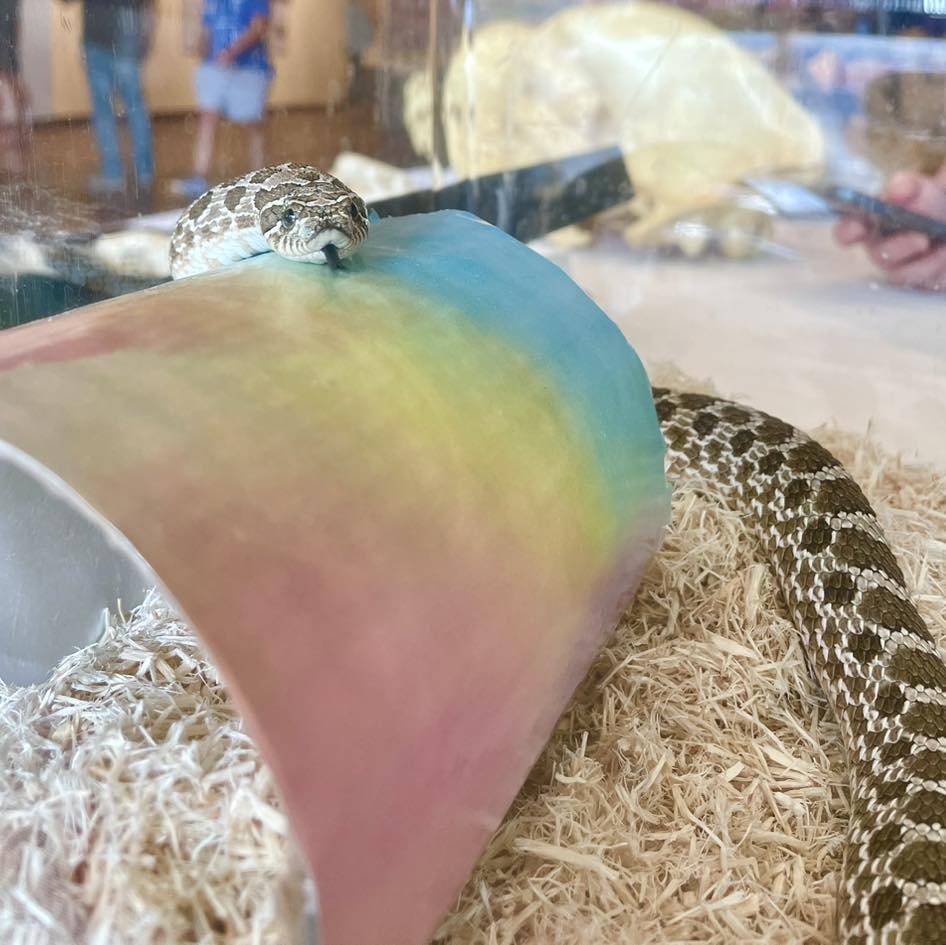- Introduction to Wilbur, the Western Hognose Snake
- Behavioral traits: digging and burrowing
- Habitat and environmental needs
- Conservation efforts and challenges
- Role of zoos in education and conservation
Wilbur, the western hognose snake, is a fascinating creature known for his unique behaviors and distinct appearance. Among his many activities, digging stands out as a significant part of his daily routine. Today, we delve into various aspects of Wilbur’s life, his habitat, and how conservation efforts are crucial to his survival.
Western hognose snakes, scientifically called Heterodon nasicus, are small, non-venomous reptiles native to North America. Their habitats extend from southern Canada to northern Mexico, predominantly in grasslands, prairies, and semi-arid regions. Wilbur, a prime example of this species, displays behaviors and physical traits that are perfect for these environments.
One notable behavior of western hognose snakes like Wilbur is their propensity for digging. Wilbur’s love for burrowing isn’t just playful; it’s an instinctual behavior that serves multiple purposes. The snake uses its digging ability to search for prey, such as toads and small rodents typically hidden beneath the surface. Furthermore, burrowing provides refuge from predators and extreme weather conditions, helping the snake to regulate its body temperature.
Wilbur’s environment must cater to his natural inclinations for digging. He thrives in habitats enriched with loose, sandy soil that allows him to burrow easily. Creating such an environment in captivity requires a deep understanding of his needs. It involves mimicking the natural prairie and semi-arid habitats he is adapted to, including substrates ranging from fine sand to soft soil, along with rocky hiding spots.
From a conservation perspective, the western hognose snake faces several challenges. Habitat loss due to agricultural expansion, urban development, and pesticide use are significant threats. Conservationists work tirelessly to mitigate these impacts through habitat restoration projects and advocating for sustainable land-use practices. Public education is crucial to dispel myths and misconceptions about snakes, promote coexistence and reduce unnecessary killings.
Zoos play a vital role in the conservation of species like Wilbur. These institutions aren’t merely places for public display but crucial centers for research, education, and breeding programs. Wilbur, for example, is part of a larger effort to raise awareness about the importance of reptiles in ecosystems. By showcasing his natural behaviors, zoos can educate visitors on the needs and challenges western hognose snakes face.
Further, zoos contribute to scientific research by providing valuable data on captive populations’ health, behavior, and genetics. This information is instrumental in understanding the species better and developing effective conservation strategies. For Wilbur, living in a zoo means contributing to the broader goal of preserving his species through engagement with the public and supporting scientific studies.
Wilbur’s habitat in the zoo is carefully designed to reflect his natural environment. This involves maintaining optimal temperature gradients and lighting conditions and enriching the enclosure with natural elements to stimulate his natural behaviors. Keepers must ensure the substrate is suitable for digging, replicate the diet he would find in the wild, and monitor his health closely.
The role of zoo management extends beyond individual care. Strategic management plans include breeding programs to increase population numbers in captivity and the wild. For species like the western hognose snake, managed breeding can help maintain genetic diversity and potentially reintroduce individuals into their natural habitats.
Wilbur’s life is a testament to understanding animal behavior and environmental needs. His daily activities, such as digging, are more than just habits; they are essential aspects of his survival. By providing an environment that encourages these natural behaviors, zookeepers contribute significantly to his well-being.
In conclusion, Wilbur, the western hognose snake, offers a glimpse into the intriguing world of reptiles. His behavior, habitat requirements, and challenges underscore the critical role of conservation efforts. Through the dedication of conservationists and the educational role of zoos, there is hope for the continued survival of species like Wilbur.
We step towards preserving our planet’s biodiversity by fostering a deeper understanding and appreciation for these animals. Each small effort in habitat restoration, public education, and focused research contributes to a larger goal of conserving the delicate balance of our ecosystems. Wilbur’s story reminds us of the wonders of the natural world and the importance of protecting it for future generations.
*****
Source Description
If there’s one thing Wilbur has planned today, it’s probably digging🤪🐍
📸Wilbur, the western hognose snake, sticks his tongue out while resting his head on a rainbow colored tube.


